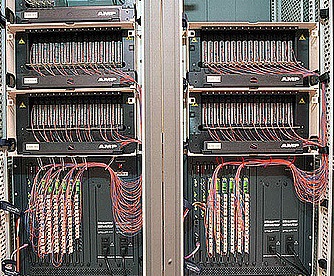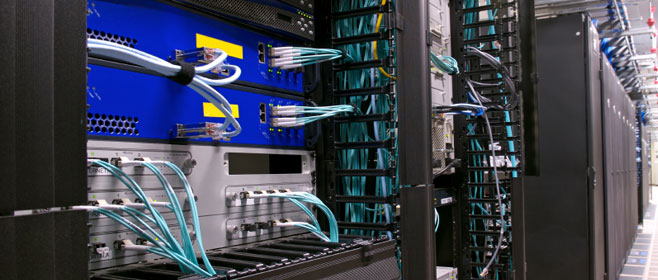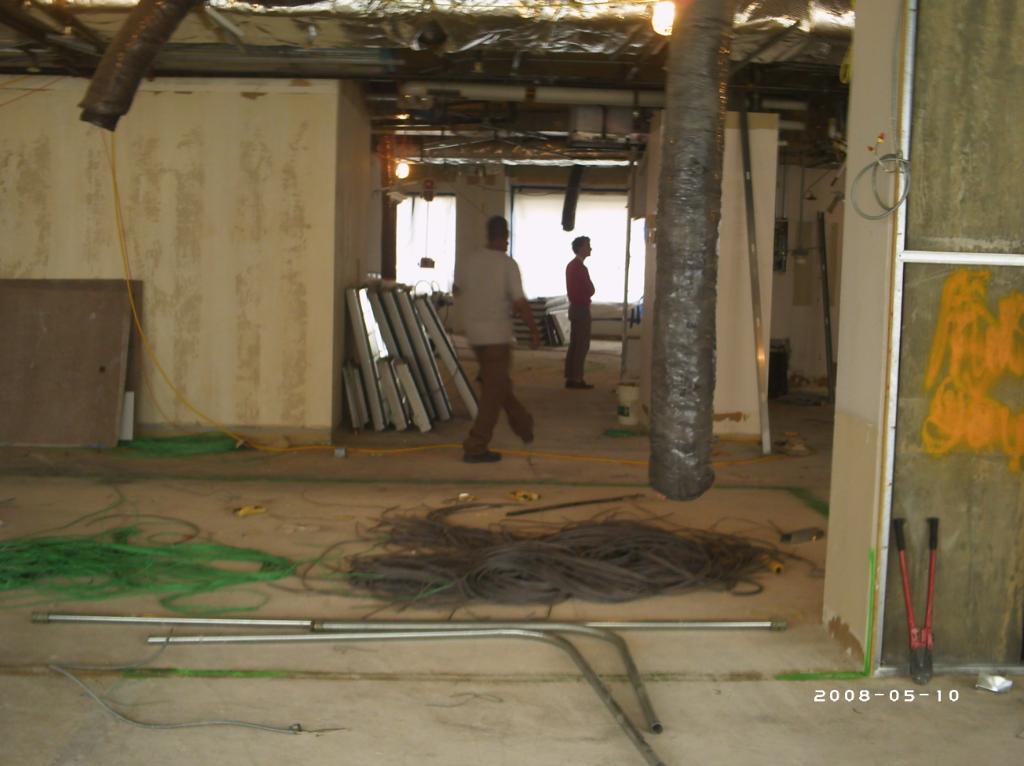
Advantages of Upgrading to Structured Cabling – Part 2
 As discussed in Part 1, point-to-point cabling systems are outdated and companies should strongly consider making the transition to structured cabling to remain competitive. Part 2 will discuss the advantages of upgrading to structured cabling.
As discussed in Part 1, point-to-point cabling systems are outdated and companies should strongly consider making the transition to structured cabling to remain competitive. Part 2 will discuss the advantages of upgrading to structured cabling.
The Advantages
Cost Effectiveness – Flexible and scalable, structured cabling can transmit data reliably and more easily handle increasingly large loads. This allows an organization to raise the productivity of its employees, helping to achieve its business goals. Its bottom line is further aided because structured cabling decreases the costs of maintenance and energy consumption.
Decreased Downtime – There is a greater chance of human error when there are several disorganized cabling networks, which result in disruptions and downtime. In contrast, a sound structured cabling system provides greater reliability; in addition, troubleshooting expenses are reduced because problems are easier to identify, find, and repair. Downtime is decreased, business losses are minimized, and a company will be more reliable and profitable.
Future Proofing –Structured cabling provides greater bandwidth and this allows a company to easily expand when its business grows. Having adaptable and scalable IT systems makes a company more competitive when it needs to evolve with its industry. Structured cabling ensures that an organization’s network infrastructure will remain capable of supporting new applications and technologies.
Greater Flexibility – Structured cabling can improve performance levels allowing a business to expand with greater ease. Move, add and change requests can be handled faster and more efficiently. Companies with structured cabling can develop and deploy services much faster because its data center can accommodate network infrastructure modifications more readily.
Maintenance Easier – Structured cabling provides a organizational approach that makes maintaining data centers and networks much more straightforward. In normal business environments, a variety of IT equipment and devices are being used simultaneously. When they are functioning on only one system, this removes the need for several wiring systems to be installed.
Progressive Office Cabling
Founded in 1986, Progressive Office’s success has been a direct result of years of commitment to seeking solutions on behalf of our clients in the Washington, D.C. and New York City areas. Efficiently working together, Progressive Office teams get cabling installed and operating as fast as possible while minimizing disruption and downtime. Call our toll free number (800) 614-4560 today.

Improve Data Center Reliability with Structured Cabling – Part 2
 As mentioned in Part 1, data center efficiency can be improved by properly planning and implementing structured cabling principles. In addition, structured cabling best practices should be the foundation of every data center. Part 2 will discuss Cabling Infrastructure and Improved Network Function.
As mentioned in Part 1, data center efficiency can be improved by properly planning and implementing structured cabling principles. In addition, structured cabling best practices should be the foundation of every data center. Part 2 will discuss Cabling Infrastructure and Improved Network Function.
Cabling Infrastructure
It would be wise to constantly keep the future in mind while you are installing your cabling infrastructure. Setting aside space will allow for expansion. The goal is to make your structured cabling both sound and dependable.
Testing Policy – After the addition or removal of equipment, testing every connection makes sure that a data center will be reliable over time. Performing these tests as a standard practice will help prevent issues that result in downtime. Inconsistent testing practices will result in an unreliable data center.
Standardization – The standardization of cable and rack usage will significantly facilitate maintenance. When there is a meltdown, the managers and engineers of a data center won’t have any doubts as to the types of cables and configuration of racks that are being utilized.
Documentation – When proper documentation is neglected, the training of new staff members will be much more difficult and take longer. The addition of equipment and related components will also result in more errors. Good documentation is integral for every sound structured cable system.
Spare Cables – The stocking of spare cables to prepare for contingencies will help prepare a data center for crises that may strike a structured cabling system.
Improved Network Function
A data center will have losses of up to $10,000 for each minute of unplanned outage. Implementing the best practices of TIA/ISO standards will raise the performance of a structured cabling system and make a data center more reliable. Its computer network will have the following benefits:
- Greater responsiveness
- Increased reliability and overall performance
- More secure data backup, storage, and retrieval
- Flexibility for accommodating additional computer terminals and components
- Capable of supporting telephony and other network-dependent systems
Progressive Office Cabling
Founded in 1986, Progressive Office’s success has been a direct result of years of commitment to seeking solutions on behalf of our clients in the Washington, D.C. and New York City areas. Efficiently working together, Progressive teams get cabling installed and operating as fast as possible while minimizing disruption and downtime. Call our toll free number (800) 614-4560 today.

Network Upgrade Planning for Companies – Part 2
 As mentioned in Part 1, a good network upgrade plan will make an analysis determining each aspect of SWOT: Strengths, Weaknesses, Opportunities, and Threats, helping project managers create a clear plan consisting of five phases. Part 1 discussed the first two, Gathering of Requirements and Selection & Design. Part 2 will cover the last three, Implementation, Operation, and Review & Evaluation.
As mentioned in Part 1, a good network upgrade plan will make an analysis determining each aspect of SWOT: Strengths, Weaknesses, Opportunities, and Threats, helping project managers create a clear plan consisting of five phases. Part 1 discussed the first two, Gathering of Requirements and Selection & Design. Part 2 will cover the last three, Implementation, Operation, and Review & Evaluation.
3) Implementation
Proper execution of the first two phases, will allow Implementation to be performed without major issues. However, every neglected task in the first two phases will certainly have to be addressed during Implementation. A sound schedule will provide time for unanticipated problems which will minimize disruptions of the customer’s business. Maintaining communication between project designers and the client throughout installation is crucial for making a project successful.
4) Operation
After the completion of the network implementation phase, the network transitions into a production environment. The network is live and executes the tasks it’s been programmed to perform. The proper completion of all tasks before this phase will minimize unexpected incidents during the network’s operation phase.
5) Review & Evaluation
Once operational, the network’s design and implementation must be studied and assessed in terms of the design’s objectives. Typically, these tasks are performed by design team staff with the help of network members. There will be an evaluation of costs, performance, and environmental fit.
The items below are recommended for this process:
- Make a comparison between user experience and the documented goals, then make an assessment of the design’s performance.
- Make a comparison between planned designs and costs and actual results of deployment, ensuring future projects will learn from these lessons.
- Observe the operation and document all revisions, making sure the system is accountable.
Each phase should practice sound planning and conduct reviews for optimal functioning and successful installation. For ideal results, on-site technicians should participate in all phases of a network upgrade. They will have a better grasp of the project’s goals, and they will able to provide users better service.
Union Network Cabling
When union work requires a unionized cabling group, call on Union Network Cabling for your commercial Cat5e/6/6a and fiber cabling projects. Specializing in cabling for data, voice, security and even the latest WiFi and LiFi solutions. Phone: (202) 462-4290

